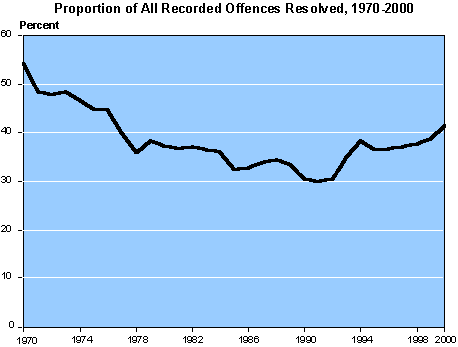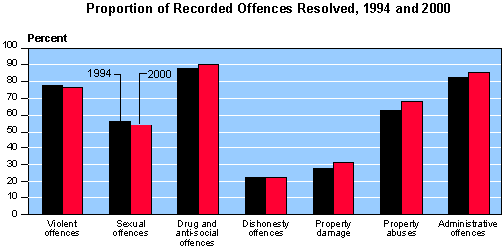| crime.files |
| |
 |
|

| crime.features |
| |
 |
|

| crime.resources |
| |
 |
|

| crime.co.nz |
| |
 |
|


|
 |  |

Resolution rate
A recorded offence is considered resolved by the police when an offender is identified and dealt with (warned, cautioned, prosecuted). Not all recorded offences are resolved. The overall resolution rate decreased from 54 percent in 1970 to a low of 30 percent in 1991. Since then, it has risen to 41 percent in 2000.
Factors affecting resolution rates include changes in police numbers or policing practices, especially practices relating to which offences are recorded. Generally, minor offences are historically more difficult to resolve than more serious offences, so any increase in the number of minor offences recorded is likely to result in a declining resolution rate.
Figure 2:

Resolution rates vary widely among the different offence categories, as shown in figure 3. This is mainly a reflection of varying levels of difficulty in identifying offenders for different crime categories. 'Victimless' crimes, such as drug and anti-social offences and administrative offences, have high resolution rates, possibly because these crimes tend to be detected by the police rather than being reported. The offender is often easier to find in these cases than in the other types of offence. Violent crimes rank third in resolution rates, reflecting the fact that in crimes against the person the offender is often known by the victim, thereby improving the likelihood of resolution. The largest offence category is dishonesty offences. Here the resolution rate is the lowest. Property damage offences also have a low resolution rate.
Figure 3:

|
 |
|

A recorded offence is considered resolved by the police when an offender is identified and dealt with (warned, cautioned, prosecuted). |
|